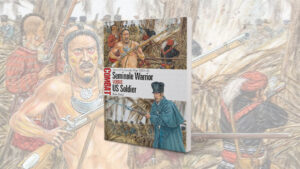The Border Between Them: Violence and Reconciliation on the Kansas-Missouri Line
by Jeremy Neely, University of Missouri Press, Columbia, 2007, 328 pages, $39.95.
When Captain George S. James pulled the lanyard of a 10-inch mortar inside Fort Johnson at 4:30 a.m. on April 12, 1861, the Civil War officially began in Charleston Harbor. But men had already been fighting about the ideological issues that precipitated that first shot for years on the blood-stained grass prairies south of the big bend of the Missouri River, along the Kansas-Missouri line. As Jeremy Neely reminds us in his insightful study of this region, The Border Between Them: Violence and Reconciliation on the Kansas-Missouri Line, “From 1856 to 1865, people in western Missouri and eastern Kansas engaged in some of the worst guerrilla fighting ever witnessed on American soil, robbing, whipping, and killing their neighbors in a vicious cycle of retaliatory violence and intimidation.”
Historians have given us vivid profiles of the leading actors in this first act of the Great American Tragedy: John Brown, James Lane, William Quantrill, Jesse and Frank James and “Bloody Bill” Anderson. And we have solid monographs on the few Civil War battles fought there. But what about the ordinary people who provided the nation with a preview of the slaughter to come? Where did they come from, and why did some of them believe in slavery and some in “free soil”? What forces molded their beliefs, drove them to bloodshed and then influenced them to reconcile their lives long after the guns fell silent?
A native son of Middle America, Neely has dug deep into the rich prairie earth of six counties—Cass, Bates and Vernon in Missouri, and Miami, Linn and Bourbon in Kansas, with no natural border between them—to produce a work that is part cultural history, part sociology and altogether satisfying and informative. His adept analysis of census data, county land and tax records, local newspapers and archives, and personal letters and diaries reveals his mastery of a wealth of data and primary source materials necessary to plumb the depths of this complex and varied region. Neely masterfully combines the skills and insights of a historian, geographer, demographer and sociologist, as well as the probing eye of one of that region’s prairie farmers, to put a human face on a tragic national story.
We accompany John Brown as he massacres proslavery settlers in Osawatomie, Kan.; ride with William Quantrill on his infamous sack of Lawrence; and relive the emotional upheaval of Missouri residents who experienced one of America’s first incidents of forced removal when they were uprooted from their communities under Union General Thomas Ewing’s General Orders No. 11. These traumatic events influenced cross-border relations for generations.
Putting events in context is often an excuse for padding a thin story. Not so for this book. Neely is relating a uniquely American saga where “During the first two-thirds of the nineteenth century, no other geographical boundary in the United States stood at the center of as many major controversies and questions as did the border between Missouri and Kansas.” Neely ascribes the border region as “an explosive political fault line and the first real battleground in the ideological struggle over whether freedom or slavery would prevail in the western territories.”
By framing the guerrilla conflict within the larger story of the developing West, Neely begins when the first white settlers arrived in the area in the late 1820s, and he does not end his saga with the conclusion of the Civil War.
Neely devotes ample space to the important process of reconciliation between residents of the two states after 1865. Economic boosterism, the coming of the railroad and the political turmoil of the 1870s that evolved into the Gilded Age of the 1890s is chronicled as part of the enduring legacy for the conflict’s veterans, victims, survivors and subsequent generations of citizens living along that border. Neely demonstrates how racial attitudes, farming practices and advancing industrialization, and waves of new immigrants helped salve the deep wounds of internecine conflict and propelled the region into the future. Nevertheless, as Neely writes, by the turn of the 20th century “the Kansas-Missouri border war still held tremendous power over its survivors and their descendents.”
The spirit of reconciliation and reunion has now put down deep roots in the tall grass prairies of Middle America, but the annual Kansas-Missouri football game—known not surprisingly as the “Border War”— reminds spectators that the border’s legacy, as William Faulkner aptly noted, “is not dead, it’s not even past.”
Originally published in the February 2008 issue of Civil War Times. To subscribe, click here.




